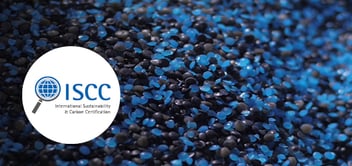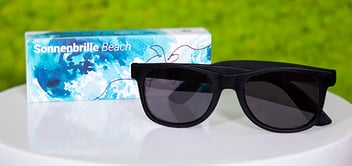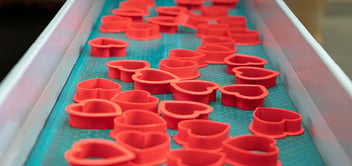Reusable instead of disposable: For the environment, against microplastic!

The boom in our industry surrounding sustainable and organic products has increased noticeably over the past decade. The demand for ecologically valuable advertising materials reflects our society's increasingly strong desire for a responsible and sustainable lifestyle. The era of pure capitalism and the associated need to accumulate an increasing number of possessions have come to a close. On the contrary, it is now much more about preserving our environment and no longer exploiting the earth unnecessarily.
At the same time, however, our generation is characterised by a to-go mentality, which comes as a result of the increasingly fast-paced times. Often, there is no time to prepare a meal for lunch or to enjoy it in a restaurant. Instead, people all too often reach for the alternative, packaged in disposable plastic, to satisfy their midday hunger pangs as quickly as possible. It is precisely this behaviour that is responsible for an exorbitant amount of single-use plastic waste. This is one of the main causes of the growing problem of microplastics in our oceans.
The problem of microplastics is an unprecedented phenomenon that has never been seen before throughout history. Plastics have become established in almost all areas of life within the short time span of just a few decades. Some are even calling our age the Plastocene - the age of plastic.
Within the flood of plastic waste, three designations have emerged. Microplastics are defined as both solid and soluble synthetic plastics that are smaller than five millimetres. All particles below a size of 100 nm, and which are therefore no longer visible to the human eye, are referred to as nanoplastics. Plastic residues larger than 5 mm are referred to as macroplastics.
Microplastics generally have two distinct origins. Either they are produced intentionally, as a component of cosmetics and hygiene products - with many scrubs and even toothpastes often found to contain added microplastics for a cleansing effect. Or option two: macroplastics become microplastics. Plastic waste disposed of improperly in the sea or on land continues to decompose. The ravages of time and the environmental influences of sun and wind break the plastic down into smaller and smaller pieces until, at some point, microplastics are created. Thus, it accumulates, in particular, in our seas and disturbs the ecological balance where it is particularly fragile.
Since there are very few, if any alternatives to plastic in many areas of application, a rethink is the top priority. Demonising plastics in general is neither expedient nor realistic. First and foremost, it is important to avoid single-use plastics. Durable and recyclable reusable plastics offer an alternative. This can reduce the waste problem and lower the amount of microplastics. Alternative plastics based on renewable raw materials, such as sugar cane, natural starch or bio-circular materials, also offer a genuine opportunity to conserve fossil resources and produce plastics in an environmentally friendly way.



